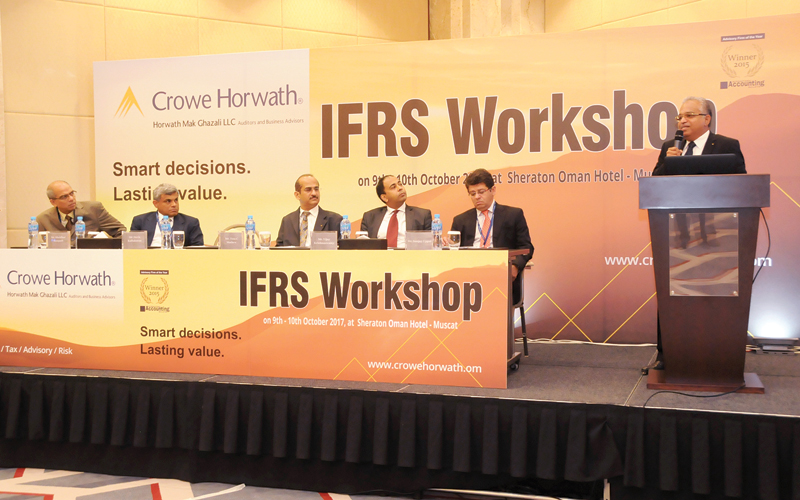

Business Reporter -
MUSCAT, OCT 9 -
A high-level workshop on International Financial Reporting Standard (IFRS 9) commenced at the Sheraton Oman hotel on Monday. The two-day workshop was organised by Crowe Horwath Oman, a leading audit firm practicing in Oman.
Welcoming the delegates, Davis Kallukaran, Managing and country Partner Crowe Horwath Oman, said: “In 1998 IASB introduced IAS 39 with the aim to define the principles on recognition, measurement and disclosures of financial and non-financial assets. However, the ever-changing markets and the creation of new financial instruments has involved a number of improvements and additions to the Accounting Standard 39 until 2007 making it more complicated.”
Kallukaran further explained: “The economic crisis of 2008 was an eye opener. It spread the conviction that the accounting rules have contributed to the acceleration, escalation and worsening of the economic crisis, especially the excessive use of fair value as a bench mark for the financial instruments accounting. The delayed recognition of credit losses on loans and other financial instruments was identified as a weakness in the accounting standards. The work on IFRS 9 to replace IAS 39 was the response by the Accounting Standard Board to face the challenges arising out of the economic crisis.”
T P Anand, one of the lead faculties, stated in his opening remarks: “IFRS 9 was issued in July 2016 introducing expected loss impairment model that will require more timely recognition of expected credit losses more specifically it requires entities to recognise the expected credit losses from day one when the financial instruments are first recognised. The standard introduced substantially reformed model for hedge accounting with enhanced disclosures about risk management activity.”
Krishnaswamy, representing True North in London, and Sanjay Uppal from Straits Bridge Singapore, remarked that IFRS 9 directly affects the assessment of client profitability by changing the way P&L charges for risk are determined. IFRS 9 has three principal measurement categories for financial assets.
The main criteria for the choice of category are the business model and the cash flow structure, they pointed out.
IFRS 9 introduces the requirement to calculate an Expected Credit Loss, ECL, using a more responsive, forward-looking expected credit loss model based either on a one year or a life time horizon. Banks need to establish a two-sided staging criteria for the identification of “significantly increased credit risk”.
The goal of these changes is to simplify the existing rules and strengthen investor confidence in financial statements of banks and the financial system. The new rules will apply from January 1, 2018.
Oman Observer is now on the WhatsApp channel. Click here



